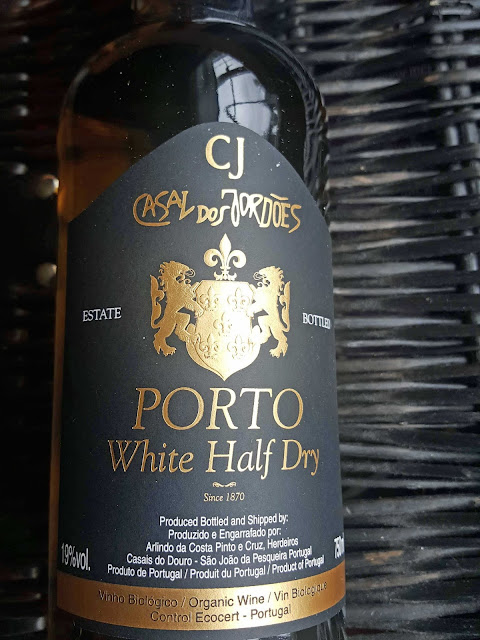A Classy 20-Year-Old Tawny Port For Christmas
And a lively Sicilian white for the aperitif and lighter dishes.
Porto Ferreira Dona Antónia 20-Year-Old Tawny Port NV
RRP €55.99 Wineonline.ie. Redmonds of Ranelagh. Clontarf Wines. World Wide Wines. Blackrock Cellar. Terroirs.
Colour is a pale tawny (as may be expected after all those years), with coppery hues. There’s an evolved unity about the aromatics but you may note dried fruit (figs, apricots), marmalade and wood smoke notes. In the mouth this polished full-bodied wine is smooth and velvety. Superb flavours and aromas, not forgetting that balancing acidity, takes us all the way through to the delicious lingering finish. An amazing wine to be sipped and enjoyed and it is Very Highly Recommended.
This intense and complex Tawny is a blend of Ports between 15 and 40 years of age and local grapes such as Touriga Franca, Touriga Nacional, Tinta Barroca, Tinta Roriz, Tinto Cão, Tinta Amarela are used.
Importers Liberty Wine tells us Ferreira was founded in 1751, when the Port trade was dominated by British shippers. Ferreira is the oldest Portuguese Port house and remains the leader in the domestic market.
“It was under the leadership of Dona Antónia Adelaide Ferreira, one of the formidable widows of the world of wine, that the company became the force it is today. Not only was Dona Antónia an astute businesswoman, she also fought to improve quality of life for the impoverished people of the Douro, building schools and hospitals and supporting them during the phylloxera crisis."
Dona Antónia was ahead of her time in recognising the importance of vineyard ownership to guarantee quality, at a point when most other Port houses bought bulk wine from farmers. By the time of her death in 1896, Ferreira had become the largest Douro landowner and owned many illustrious Quintas including Quinta do Vesúvio, Quinta de Vargellas and Quinta do Vale Meão.
Today, the 27-hectare ‘Quinta do Porto’ is Ferreira’s flagship vineyard. Planted in 1771 and acquired by Dona Antónia in 1863. A warmer mesoclimate, due to the south/south-west exposure of the terraced vineyards and the proximity to the river, results in ports characterised by an exuberant ripeness, exceptional concentration, weight and structure, yet wonderful balance.
Old-vine parcels, described by winemaker Luís Sottomayor as “over retirement age”, produce low yields of intensely flavoured grapes and form the backbone of many of the top ports in the Ferreira range. The entire Quinta is dry farmed, sustainable practices are followed and harvesting is carried out by hand.
Here’s how Ferreira make their port:
Upon arrival at the Quinta do Seixo winery, the grapes were destemmed and gently crushed. Fermentation took place in stainless-steel vats with vigorous punch downs to extract the ideal levels of colour, flavour and tannin before fortification. The ferment was closely monitored to determine the ideal moment to halt the fermentation by fortifying with grape spirit, leaving some of the grapes’ natural sugars. The wines remained in the Douro until the spring following the harvest when they were transported downstream to the historic Ferreira cellars in Vila Nova de Gaia for oxidative ageing in oak barrels.
************************************************
Best Value Wines 2022 Under €18.00. With Reviews & Irish Stockists.
************************************************
Curatolo Arini Inzolia Terre Siciliane (IGP) 2021, 12%
RRP €19.99 The Village Greengrocer Castlemartyr / Myles Creek / The Cinnamon Cottage Cork /Wineonline.ie
The winery tells us that Inzolia, also known as Ansonica or Insolia, is the oldest Sicilian indigenous grape. It is usually of good quality and mostly found in a blend, most famously perhaps in the local Marsala.
Here it is on a solo! It is quite clean and bright in the glass with a lovely straw colour and a tint or two of green. Aromas are a little on the shy side but you’ll get the citrus, the almond and even the blossom. It is mostly citrus on the palate and there is also a pleasing salty note and a fresh minerality through to the satisfactory finish. A lively little number and one to note. Highly Recommended. Serve with grilled fish, baked chicken, grilled vegetables.
Importers Liberty: Established in 1875 by Vito Curatolo Arini, the winery is now run by the fifth generation of the Curatolo family, making it the oldest family-owned Marsala producer. Alberto Antonini is the consultant winemaker and his influence is evident in the wines, combining the richness that Sicily can easily provide with the freshness only someone with Alberto’s experience can retain.
Following harvest, the grapes were de-stemmed and allowed to macerate on their skins before a gentle pressing. Fermentation took place at 15° in stainless steel tanks. The wine is then left on lees at least 6 months before being bottled and “as a result it is fresh and vibrant with beautiful aromatics and a very clear sense of place”.
************************************************
Top Wines 2022. With Reviews & Irish Stockists.
************************************************
*******





























